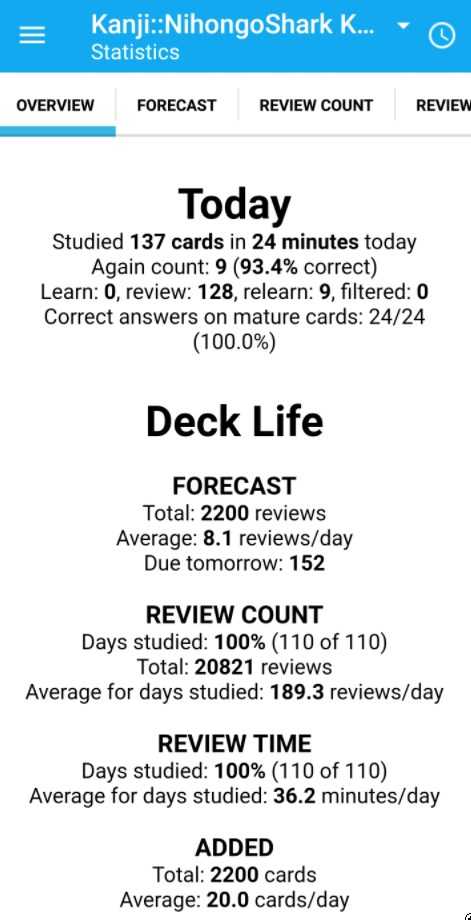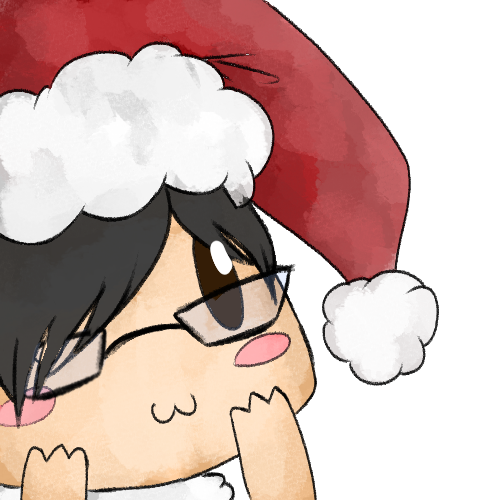This challenge took place from December 2018 to March 2019
Like all other people who started learning Japanese, I was told the horrors of the written language: There are 3 alphabets, one of them has over 2000 characters, and each one of those characters has multiple pronunciations and a specific order to write them. Now unlike other beginners, that didn’t phase me. Maybe it was because I had experience learning characters from Mandarin, but I knew that learning characters is less difficult than people make it out to be.
That feeling was reinforced when I found the book Remembering The Kanji (RTK), along with a small group of people who are diehard fans of it. The book’s author claimed that he learned 1900 kanji within a month using this method. Now that might seem crazy, but his circumstances were a bit unusual. He was in Japan and had nothing to do for a few months so he had the time to dedicate what I assume must have been 8 hours a day to kanji study. I’m going to write a separate post that explains the details of his method so I won’t get too much into it here, but it basically says that every kanji is made out of smaller kanji, and if we assign keywords to those smallest units of kanji, we can string together these keywords using mnemonics to progressively build up more complex characters. Using this method, you can quickly learn a lot of kanji in a short amount of time.
The Plan
The Japanese Ministry of Education has compiled a list of 2200 kanji that all citizens should be able to read by the time they graduate high school. These kanji, called the jōyō kanji, serves as a good starting point to use the RTK method. Doing some basic math, learning 20 kanji a day means that you would finish the entire list of jōyō kanji in a little over a hundred days. This might seem like a long time, but compared to the whole journey of learning Japanese, it’s nothing. If you could knock out one of the biggest hurdles in Japanese in less than four months, you can definitely take on whatever else the language throws at you.
As a person who tends to overdo things, I immediately got on the bandwagon, fired up my favorite SRS flashcard program, Anki, and downloaded a flashcard deck containing all the 2200 kanji in the book. My initial plan was this: 20 kanji a day, and every time I review a card I would also practice writing the character. I even bought a dedicated dotted-grid notebook to write all my kanji in.
The Execution
So I made a slight miscalculation. It turns out that writing takes time, and even just a few more seconds on each flashcard added up when it was multiplied by 20 new cards a day and many times more that to review. It also didn’t help that halfway through the first deck, I decided to add on NihongoShark’s RTK deck just for reinforcement, so I was adding 40 new cards a day. At one point I was doing 500-700 flashcard reviews a day, and since it takes 20 seconds to review each card and write down the kanji, there were some days where I was doing flashcards for 3-4 hours. This did result in an impressive book of tens of thousands of kanji but at the cost of sleep and hand cramps. Looking back, I definitely would’ve picked to not learn how to write the kanji first, and also not be an idiot and double my workload because I was doubting the process. If I had just stuck with a single deck and focused on kanji recognition and not kanji production, I probably would have saved hundreds of hours. So here’s my advice: unless you know you’re going to be in a situation where you have to handwrite essays in Japanese, skip learning how to write the characters. You can always come back and learn them later when you actually know enough Japanese to write essays.
The Result

So it’s been over a year since I finished the challenge, so what are the long term results?
Well, since completing the challenge and immersing in Japanese for a few hours a day, I can only recount a few occasions where I did not recognize the kanji, and most of the time it was because it was a jinmeiyō kanji (kanji only used in names). There was only one occasion I can recall where I encountered a non-jōyō non-jinmeiyō kanji, and it was only because I was reading song lyrics and they decided to use the obscure kanji of a common grammar point to make it look more poetic (for those who are curious, the character was 儘). Other than that, I had no issues with reading kanji during my immersion.
edit: Just finished reading a book in Japanese and I’ve now encountered maybe ~6 kanji so far that isn’t jōyō or jinmeiyō. I suspect that these kanji would be in the RTK book 3, since I only did book 1.
Also, at this point I don’t remember any of the mnemonics or the keywords I used. Most of the time when I see a kanji, I just get a general ‘feeling’ of what it means, which is what I’m assuming is a sort of mentalese that developed over time through immersion. If I don’t get this feeling when seeing a kanji that I recognize, then that means that I haven’t seen it enough in the real world to develop that feeling. In that case, I would take a minute to look up the keyword again and that is usually enough to jumpstart my brain. I don’t review kanji with flashcards anymore and have since deleted my anki decks.
The Conclusion
Would I do this again? Yes. I feel no regrets doing it, but that is also because I know that I’m going to be learning Japanese for the foreseeable future so four months wasn’t a long time. The psychological hurdle of having to learn all the kanji is now gone. I don’t feel like there are any more large hurdles in Japanese anymore; it’s just a numbers game of learning vocabulary and getting used to grammar. Because this weight is off my shoulders, I feel much more confident reading literally anything in Japanese. Even if I don’t know all the words, at least I know that I can read all the characters individually.
The next challenge I did after this was 150 days of LingQ. Check it out now.
Questions related to this post:
